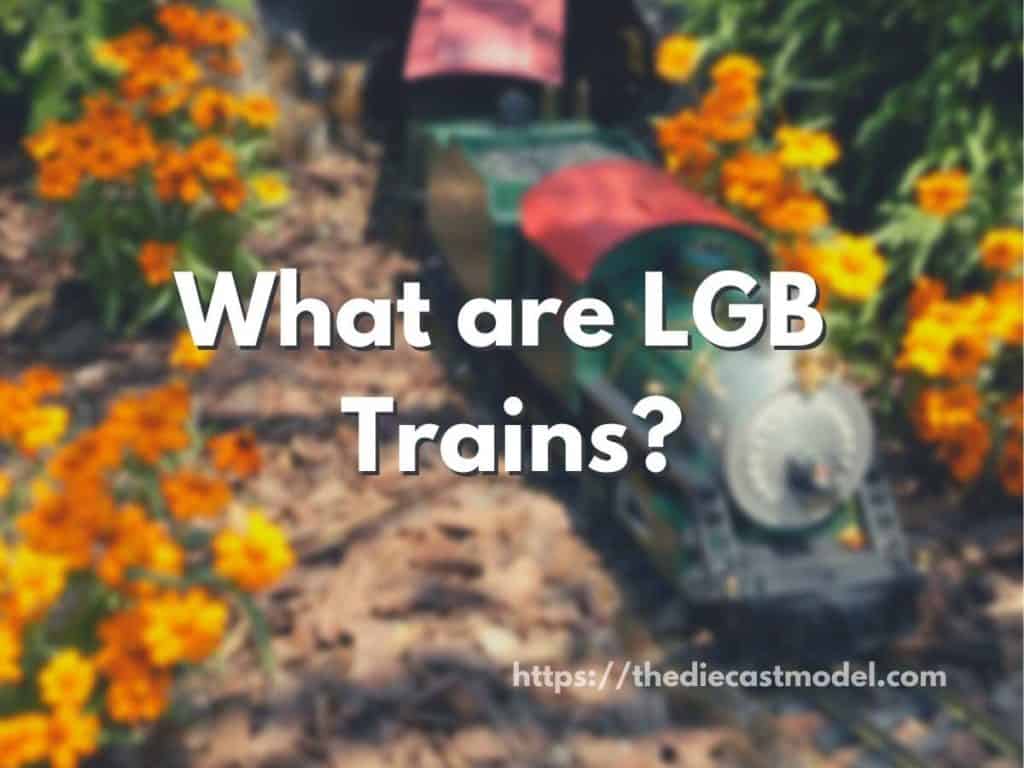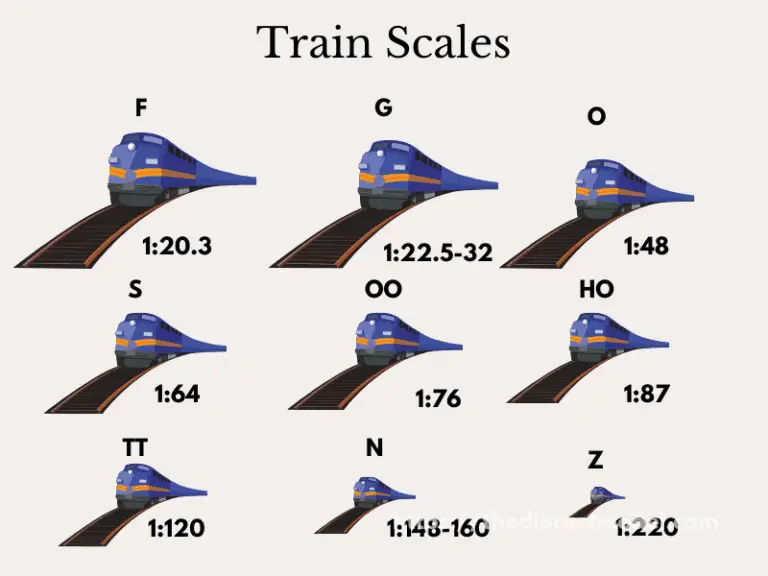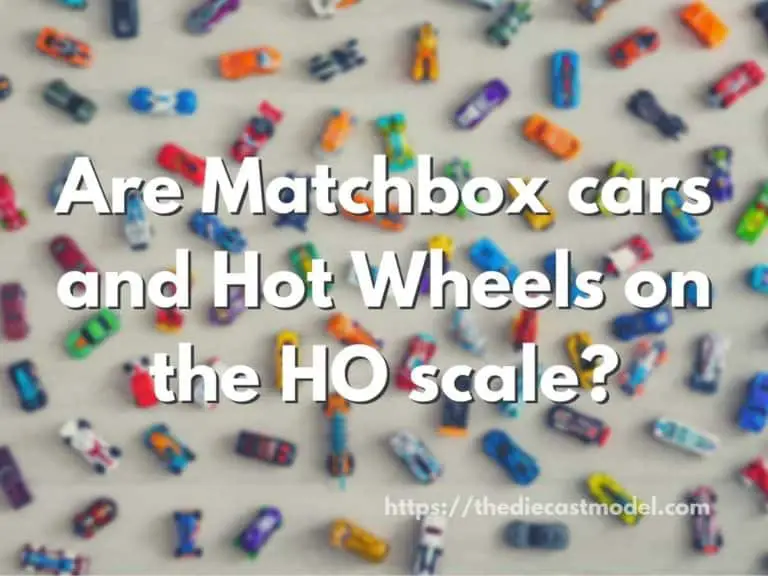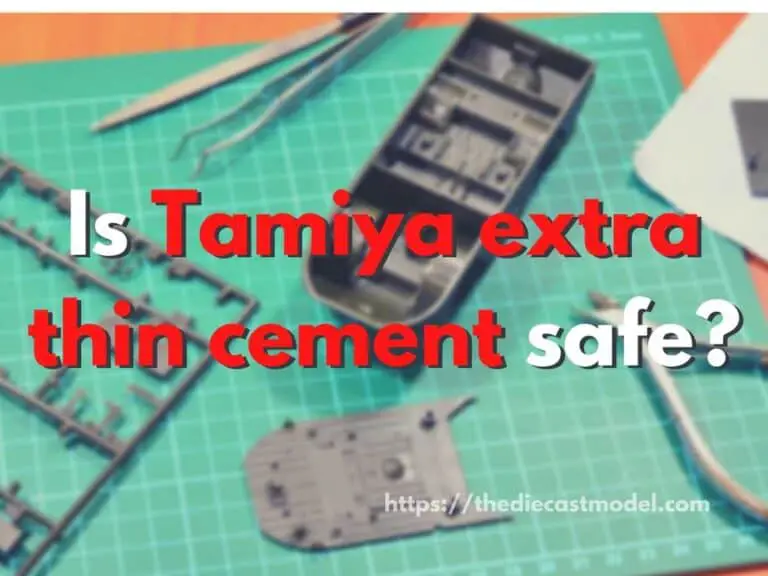LGB Trains: Introduction, Scale, Size, and Quality
LGB trains are one of the most popular companies that offer G scale train models. This company started in Germany in 1968 when they introduced the G scale. LGB stands for Lehmann Gross Bahn or Lehmann Big Trains if translated to English. This scale has a rich history, and this post will discuss everything you need to know about LGB trains.
LGB Trains is a German company that started in 1968 in Nuremberg, Germany. They are known for their large G scale models, which became popular for outdoor model railroading. These train models run on a 1.75″ (45mm) gauge and are considered the largest commercially available model train.
This post will discuss what LGB trains are. Furthermore, we will dive into their history, characteristics of their G scale models, and if their models are good.

What are LGB Trains?
The inspiration for LGB trains came from Ernst Paul Lehmann Patentwerk’s desire to make large model trains for outdoor use.
That’s why he named LGB Lehmann Gross Bahn, which translates to Lehmann Big Trains.
While LGB is the company that popularized the G scale models, they weren’t the first ones to build models of this size.
Let’s talk about a brief history of the G scale.
In the early days, the size of train models isn’t named using scales. Instead, they are named using gauge.
For example, when they say Gauge 0, it is equivalent to the modern O scale. If you half the O scale, you get the HO scale.
Gauges are named by numbers, and the larger the number, the larger the model.
Thus, Gauge 1 is larger than Gauge 0.
The half of Gauge 1 is now called the S scale or the 1:64 scale. This is the scale used by other popular brands such as Hot Wheels and Matchbox.
The equivalent of the Gauge 1 is the modern G scale.
Recommended Read: To learn more about the scale for Hot Wheels and Matchbox, please check this post: Are Matchbox and Hot Wheels on the HO scale?
The point here is that Gauge 1 has been used to define a train in the G scale, which dates far before 1968.
However, it was not as popular as the Gauge 0.
In 1968, a company from Germany named LGB introduced large-scale model trains, which they called the G scale.
It is called the G scale because they are meant to be used on Gardens. Hence, it is called the Garden scale.
This became a success because the O and HO scale model trains aren’t meant to be used outdoors. Instead, it tapped a desire for people to put train layouts in their garden.
This also helped companies and parks put train displays in their garden to attract more people.
In short, the G scale is a success since it is an untapped market.
However, did you know that the G scale is very complicated as it is slightly different from other scales? We will discuss the size and quality of LGB trains in the following sections.
What scale are LGB trains?
The LGB trains as in the G scale, which is in the 1:22 to 32 scale. This is because 1:22.5, 1:24, 1:25, 1:29, and 1:32 are all considered to be G scales. While many scales are considered G scales, their common characteristic is that they run on the same 45mm gauge track.
As I said in the brief history of the G scale, they are considered to be one of the largest commercially available in the market, and they cover big scales such as the 1:22.5.
Of course, there is a larger scale than the G scale, known as the F scale. But G scale is more popular and common than the F scale.
To compare, the F scale is 1:20.3.
The G scale is unique compared to other scales. Why? Because most of the scales have a defined scale.
For example, the HO scale is 1:87, the OO scale is 1:76, the F scale is 1:20.3, and the N scale is 1:160.
The G scale has numerous scales, which can be 1:22.5, 1:24, 1:25, 1:29, and 1:32.
If you remember, the 1:32 is synonymous to gauge 1.
So why is the G scale confusing? Other scales followed the same scale since they could use different gauge tracks.
In short, trains and tracks are not of the same size.
For example, the HO scale uses a standard and narrow gauge. Furthermore, narrow-gauge tracks can be classified into many categories, such as the HOn3 and HOn30.
Note: HOn30 is HO scale narrow gauge 30 inches while HOn3 is HO scale narrow gauge 3 feet.
If you are confused, well, you’re not alone. Memorizing track sizes can be a pain for some beginner modelers. That’s why the G scale removed that by using the same track gauge for all their models.
Instead of having a narrow and standard gauge track, the G scale stuck to the 45mm gauge track which they used for all their models.
Since the track gauge is the same, they need to change the size of their models depending on the track. That’s why some modelers confuse the G scale as the “Gauge” scale.
However, the G scale stands for Garden scale since it is one of the most robust train models in the market. We will talk more about these later.
Recommended Read: The scale is different from the gauge. If you are confused between the two, I recommend reading my post here, which gives a clear explanation of their differences: HO vs. OO scale.
So, all LGB trains can run on a 45mm gauge track regardless if they are on the 1:24 or 1:32 scale.
Here are the characteristics of G Scale Model Trains:
| Characteristics | |
| Name | G Scale or Garden Scale |
| Scale to Feet | 0.5 inches or 13.55 mm to 1 foot |
| Scale | 1:22.5, 1:24, 1:25, 1:29, 1:32 |
| Gauge | 45mm |
| Quality | Robust and High Quality |
| Use | Outdoor Use |
| Materials | Brass, Aluminum, Stainless Steel |
| Minimum Required Space | 4 to 6 ft |
| Track Length | 2 to 3 ft |
| Price | Expensive |
What size are LGB trains?
As a general rule, standard gauge LGB trains are on the 1:22.5 scale. However, they can be for 1:22.5 to 32, depending on the model. But the general rule is that they run on 45mm gauge tracks and are 13.55 mm or 0.5 inches to 1 foot compared to actual trains.
Since G scale trains have a variety of scales, their size varies a lot.
For example, trains that run on narrow gauges need to be enlarged to fit the G scale track.
However, the standard scale for LGB trains is 1:22.5.
The problem is that the sizes of actual trains are different from one another. In addition, as I’ve discussed earlier on scales, they also run on different gauge tracks.
So, how can we get the size of the G scale? Well, there are two constants when talking about the G scale.
One is what we’ve already discussed, which is talking about their 45mm gauge track.
Another is their ratio from inches to feet.
Generally speaking, G scale models are 0.5 inches or 13.55 mm to foot. So, for example, a 60 feet boxcar will be about 30 inches when converted to a G scale.
A 50 feet boxcar would be 25 inches when converted to a G scale.
So, the most straightforward answer is to divide the length of the train into two then convert it to inches to find the size of G scale model trains.
The last section will talk about if LGB trains are of good quality.
Are LGB trains of Good Quality?
LGB trains are of good quality, and they are one of the few brands that produce model trains that are suitable for outdoors. Their models are also made with robust materials which can resist oxidation and weather damage.
The G scale is quite a complicated topic since it is unique in size. However, if you’re a fan of modeling outdoors, you will not go wrong with G scale models.
Furthermore, LGB trains have been around for more than 50 years, and they are selling with the name Wm. K. Walthers in the USA.
What’s special about LGB trains is that they produce the Garden scale, which is a model that is suitable outdoors.
Thus, modelers who are into making layouts outside their house or companies who would want to put model trains outside their office can use LGB trains.
But what makes LGB trains of good quality?
What makes LGB trains of good quality is their materials.
Since LGB trains are designed to be used outdoors, they ensure that their models are robust compared to other models. The trains should withstand harsh conditions such as rain or snow. They should also resist oxidation that leads to rusting.
That’s why most LGB models are made out of brass or aluminum, which are resistant to oxidation. Also, some more expensive LGB models use stainless steel.
However, while LGB trains are of good quality, they are usually expensive for many reasons.
One reason is that since they use robust materials, their cost of production is high compared to models made for indoor use. Furthermore, since they are not as popular as the HO, OO, O, and N scale models, their supply is limited, making them generally more expensive than other models.
For example, you can expect to spend at least $400 on a G scale train.
Compare this to HO sets which would only cost $200 for the entire set with trains, tracks, layout designs, controllers, and power supply if you’re good at finding deals.
Lastly, since there are only a few people who use the G scale, it won’t be easy selling them in case you want to sell your layout.
So, LGB trains are of good quality. But take note that there are some drawbacks when using them.
If you’re into indoor train modeling, it is better to go for HO, OO, or N scale models.
Only use the G scale if you plan to model outdoors.
What’s next? Do you know the various terms people use to describe a model train enthusiast? I made a post talking about that exciting topic here: What do you call a train enthusiast?







